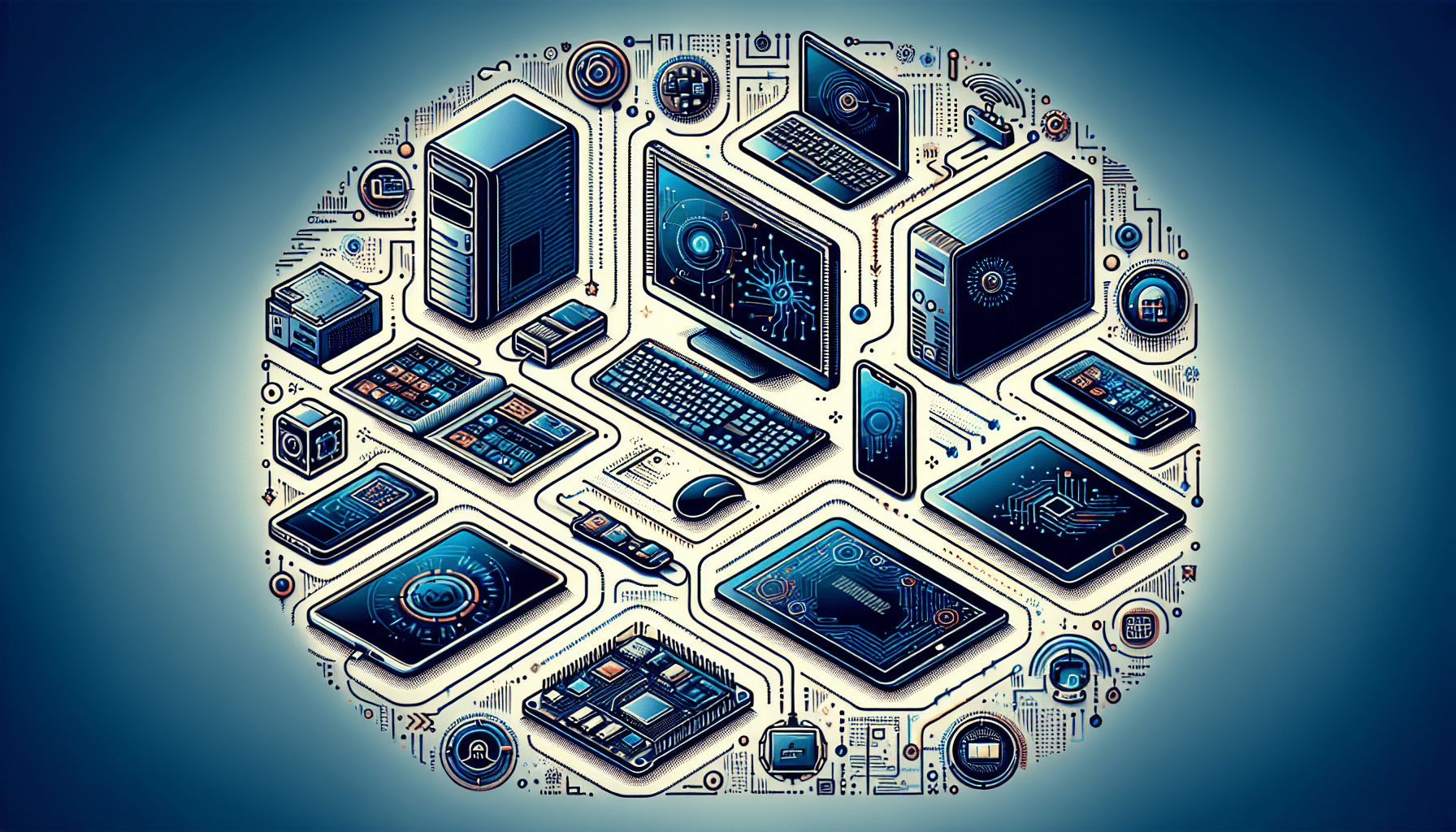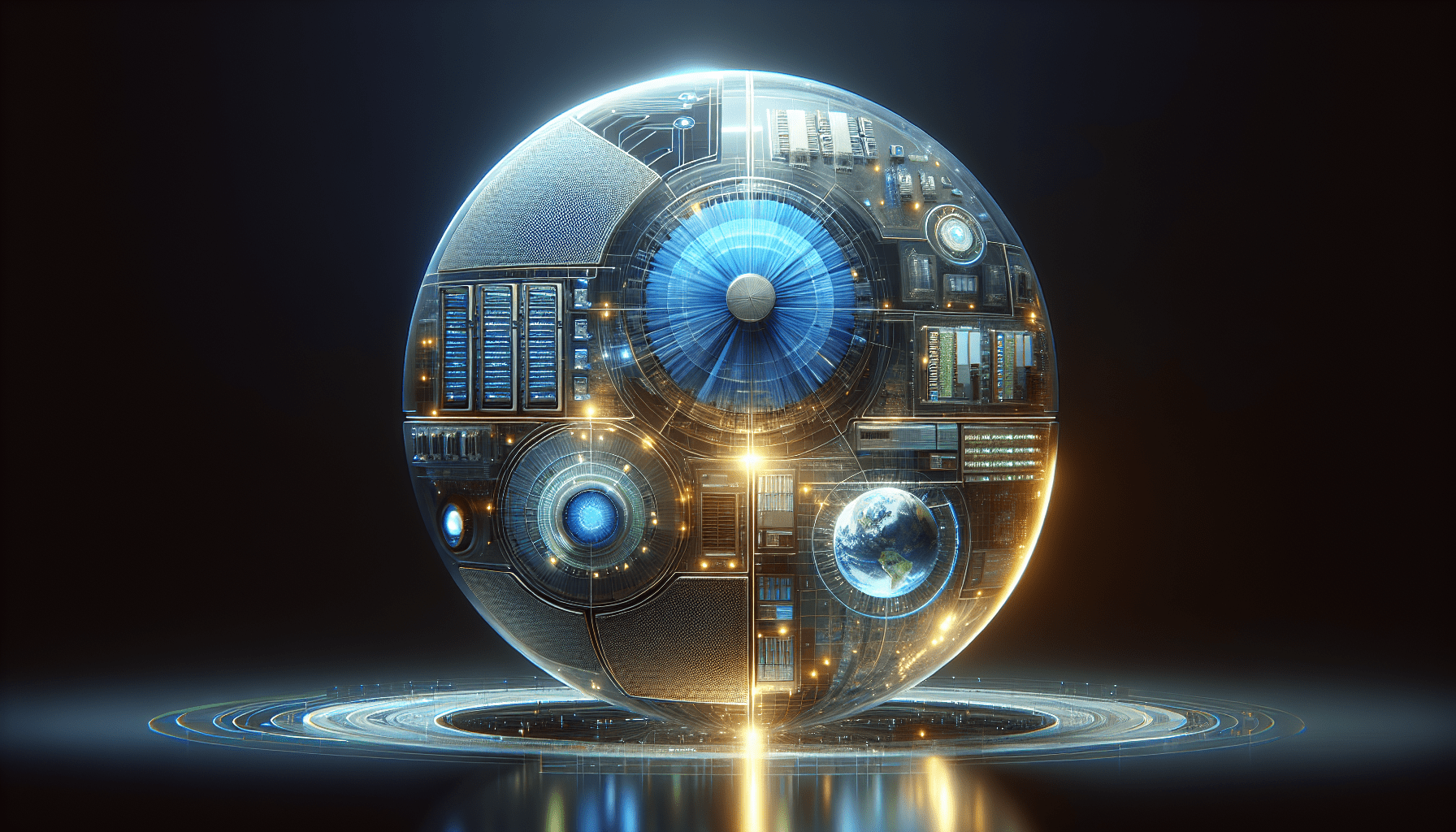



In today’s technologically advanced world, it is important to understand the various types of computers that have become an integral part of our lives. Whether you’re a tech-savvy individual or just someone curious about the world of technology, knowing the five main types of computers is crucial. From personal computers that we use for everyday tasks to supercomputers that handle complex calculations, each type serves a specific purpose and has its own unique characteristics. Let’s explore these five main types of computers and discover their significance in our modern society.
Mainframe Computers
Definition and Characteristics
Mainframe computers are large, powerful computers that are designed for handling complex and high-volume tasks. They are capable of processing enormous amounts of data and supporting multiple users simultaneously. Mainframes typically have large storage capacities and can execute multiple tasks concurrently. These computers are known for their reliability, scalability, and high-performance capabilities.
Applications
Mainframe computers are commonly used in industries such as banking, finance, healthcare, and government agencies. They are used for critical applications like transaction processing, data analysis, and running large-scale databases. Mainframes are also utilized in scientific research to perform complex simulations and calculations. With their ability to handle heavy workloads, mainframe computers are indispensable in industries that rely on real-time, secure, and high-speed processing of large-scale data.
Advantages
One of the key advantages of mainframe computers is their exceptional processing power. They can handle extensive calculations and data processing tasks that would be impossible or time-consuming for other types of computers. Mainframes also offer a high level of reliability and availability, with built-in redundancy and fault-tolerant features. This ensures minimal downtime and uninterrupted operations, making them suitable for mission-critical applications. Additionally, mainframes are highly scalable, allowing organizations to easily expand their computing capabilities as their needs grow.
Disadvantages
While mainframe computers offer numerous benefits, they are not without their drawbacks. One major disadvantage is the high cost associated with acquiring and maintaining mainframes. These computers often require specialized hardware, software, and highly skilled professionals to operate and maintain them. This can result in significant financial investments for organizations. Additionally, the complexity of mainframes can make it challenging to adapt and integrate them with newer technologies and systems. Finally, the sheer size and power requirements of mainframes can pose physical space and energy consumption challenges.
Supercomputers
Definition and Characteristics
Supercomputers are the most powerful and fastest computers available. These highly specialized machines are designed to process massive amounts of data and perform complex calculations at unprecedented speeds. Supercomputers often consist of multiple processors or nodes that work together to solve complex problems. They are built using cutting-edge technology and often incorporate specialized hardware, such as accelerators and advanced memory systems, to achieve unparalleled performance.
Applications
Supercomputers are used in a variety of fields that require intensive computational capabilities. They play a crucial role in scientific research, enabling simulations and modeling in areas such as weather forecasting, climate studies, and astrophysics. Supercomputers also find applications in engineering, where they aid in designing and testing complex systems. Additionally, they are employed in industries like healthcare, oil and gas exploration, and finance, where the ability to process massive datasets quickly is essential.
Advantages
The primary advantage of supercomputers is their unparalleled computational power. They possess immense processing capabilities, allowing them to tackle complex problems and simulations that would be otherwise infeasible. Supercomputers excel at handling large-scale data analysis, enabling researchers to gain insights and make discoveries at an unprecedented scale. Their exceptional speed and performance significantly accelerate various computational tasks, leading to faster research progress and increased productivity.
Disadvantages
Supercomputers also come with certain disadvantages. One major drawback is the high cost associated with developing, acquiring, and maintaining these machines. Building and operating a supercomputer facility requires substantial financial investment, making access to these systems limited to a few organizations or research institutions. Additionally, the energy consumption of supercomputers is substantial. The immense processing power requires a significant amount of electricity, resulting in high operational costs and environmental considerations. Finally, the complexity of programming and optimizing software for supercomputers can pose challenges for developers and researchers.

Personal Computers (PCs)
Definition and Characteristics
Personal computers, commonly known as PCs, are computers designed for individual use. These computers are smaller in size compared to mainframes and supercomputers, and they are designed to be affordable and easy to use. PCs consist of a central processing unit (CPU), memory, storage, and various input/output devices such as keyboards, mice, and monitors. They are typically powered by an operating system that enables users to perform a wide range of tasks, from basic browsing and word processing to complex multimedia editing and gaming.
Applications
PCs have become an integral part of modern life and find applications in various sectors. They are extensively used in offices, schools, and homes for tasks such as document creation, spreadsheets, presentations, internet browsing, and communication. PCs also serve as multimedia devices, allowing users to edit photos, videos, and music. Furthermore, PCs are popular gaming platforms, providing a vast library of games for entertainment purposes. They also serve as development environments for software developers and designers.
Advantages
The widespread use of PCs can be attributed to several advantages they offer. PCs provide users with a versatile computing platform that can accommodate a wide range of software applications, making them suitable for different purposes. They are user-friendly, with intuitive interfaces and operating systems that require minimal technical knowledge to operate. PCs also allow users to customize and upgrade their hardware and software components, providing flexibility for individual needs and preferences. Additionally, PCs are cost-effective compared to mainframes and supercomputers, making them accessible to a broader audience.
Disadvantages
Despite their popularity, PCs are not without downsides. One disadvantage is their relatively limited processing power compared to mainframes and supercomputers. PC hardware is designed for general-purpose computing and may struggle with resource-intensive tasks or large datasets. PCs may also face issues related to software compatibility and security vulnerabilities, as they are more exposed to viruses and malware due to their internet connectivity. Additionally, PCs often have a shorter lifespan compared to other computer types, as rapid advancements in technology can quickly make hardware or software obsolete.
Workstations
Definition and Characteristics
Workstations are high-performance computers that are designed for professional use in specialized fields. They are typically equipped with powerful processors, ample memory, and top-of-the-line graphics cards to handle demanding tasks. Workstations often feature multiple monitors, specialized peripherals, and advanced input devices like stylus pens for precision work. They are built to provide the computing power necessary for tasks such as computer-aided design (CAD), video editing, 3D modeling, and scientific simulations.
Applications
Workstations find applications in industries that require advanced computing capabilities for specialized tasks. They are commonly used by professionals in fields such as architecture, engineering, graphic design, animation, and scientific research. Workstations enable professionals to work with complex models and visualizations, allowing them to create intricate designs, render realistic images, and analyze massive datasets. These computers also facilitate collaborative work, as they can support multiple users working together on large projects.
Advantages
The advantages of workstations lie in their high-performance and specialized capabilities. They offer exceptional computing power, enabling professionals to handle resource-intensive tasks with speed and precision. Workstations are equipped with specialized software and hardware components optimized for specific applications, allowing for efficient and accurate work. The ability to support multiple displays and advanced input devices provides professionals with enhanced productivity and a more immersive work environment.
Disadvantages
One notable disadvantage of workstations is their cost. Like mainframes and supercomputers, workstations often require premium hardware components and specialized software, increasing their price compared to standard personal computers. Professionals who depend on workstations may also encounter challenges related to software compatibility and licensing, as specialized applications may have limited availability or higher costs. Additionally, the high-performance components in workstations consume significant amounts of power, resulting in higher energy consumption and operational costs.

Embedded Systems
Definition and Characteristics
Embedded systems are computers designed to perform specific functions within larger systems or devices. They are typically small, low-power devices integrated into various electronic systems. Embedded systems are built with specialized hardware and software that are tightly coupled to the target application. These systems are commonly found in everyday objects like household appliances, electronic gadgets, vehicles, industrial machinery, and medical equipment.
Applications
Embedded systems have a wide range of applications in various industries. They are extensively used in the automotive industry to control engine systems, monitor vehicle performance, and operate infotainment systems. In the healthcare sector, embedded systems are utilized in medical devices such as pacemakers, insulin pumps, and patient monitoring systems. Consumer electronics like smartphones, smartwatches, and home automation devices also rely on embedded systems for their functionality. Additionally, industrial control systems, robotics, and aerospace systems incorporate embedded systems to ensure precise operation and efficient functionality.
Advantages
Embedded systems offer several advantages due to their specialized nature. They are designed with specific applications in mind, resulting in optimized performance and efficient resource utilization. Embedded systems are often low-power devices, consuming minimal energy and allowing for longer battery life in portable devices. Their compact size and integration into larger systems enable seamless operation without the need for external peripherals or complex setups. Furthermore, embedded systems provide enhanced reliability and real-time responsiveness, critical factors in applications where safety and efficiency are paramount.
Disadvantages
One notable disadvantage of embedded systems is the limited flexibility they offer. These systems are specifically designed for a particular purpose and often lack the versatility and upgradability of other computer types. Updates or modifications to embedded systems may require significant efforts or even hardware replacements. As a result, embedded systems may struggle to adapt to new technologies or changing requirements compared to more flexible computing platforms. The specialized nature of embedded systems also poses challenges for software development, as it requires expertise and knowledge specific to the target application.
Disclosure: As an Amazon Associate, I earn from qualifying purchases.





